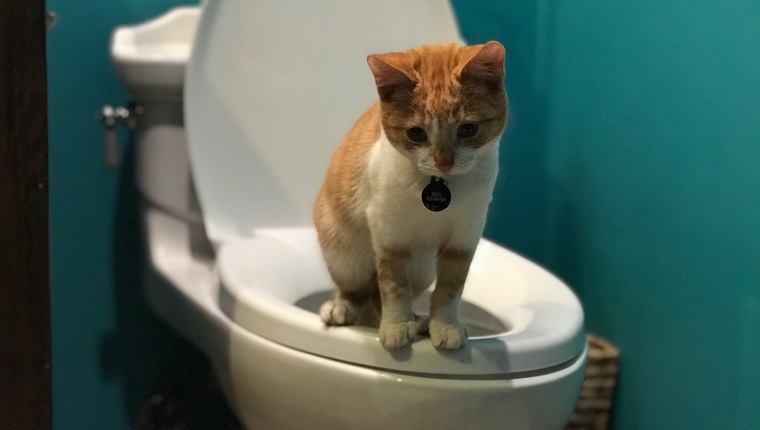Prevent Bathroom Emergencies: Never Flush Cat Poop Down Your Toilet - Professional Advice
Prevent Bathroom Emergencies: Never Flush Cat Poop Down Your Toilet - Professional Advice
Blog Article
Just about everyone seems to have their private perception with regards to How to Dispose of Cat Poop and Litter Without Plastic Bags.

Introduction
As feline owners, it's essential to be mindful of exactly how we get rid of our feline good friends' waste. While it might seem hassle-free to flush cat poop down the toilet, this method can have destructive repercussions for both the atmosphere and human wellness.
Alternatives to Flushing
Fortunately, there are safer and much more accountable means to deal with feline poop. Consider the following alternatives:
1. Scoop and Dispose in Trash
The most usual method of getting rid of feline poop is to scoop it into a naturally degradable bag and toss it in the trash. Make sure to utilize a dedicated clutter scoop and get rid of the waste promptly.
2. Use Biodegradable Litter
Choose eco-friendly feline litter made from products such as corn or wheat. These trashes are eco-friendly and can be safely disposed of in the trash.
3. Bury in the Yard
If you have a backyard, take into consideration burying feline waste in a designated area away from veggie yards and water resources. Make certain to dig deep adequate to prevent contamination of groundwater.
4. Set Up a Pet Waste Disposal System
Buy an animal garbage disposal system especially designed for cat waste. These systems utilize enzymes to break down the waste, minimizing odor and ecological impact.
Health Risks
Along with environmental worries, purging pet cat waste can also posture health and wellness threats to humans. Pet cat feces may contain Toxoplasma gondii, a bloodsucker that can cause toxoplasmosis-- a potentially extreme ailment, especially for pregnant females and individuals with damaged immune systems.
Environmental Impact
Purging feline poop presents dangerous pathogens and bloodsuckers right into the water system, presenting a significant risk to aquatic ecosystems. These impurities can negatively impact marine life and concession water quality.
Verdict
Responsible pet dog ownership expands past providing food and sanctuary-- it likewise involves appropriate waste management. By avoiding flushing feline poop down the bathroom and selecting alternative disposal techniques, we can reduce our environmental footprint and secure human health and wellness.
Why Can’t I Flush Cat Poop?
It Spreads a Parasite
Cats are frequently infected with a parasite called toxoplasma gondii. The parasite causes an infection called toxoplasmosis. It is usually harmless to cats. The parasite only uses cat poop as a host for its eggs. Otherwise, the cat’s immune system usually keeps the infection at low enough levels to maintain its own health. But it does not stop the develop of eggs. These eggs are tiny and surprisingly tough. They may survive for a year before they begin to grow. But that’s the problem.
Our wastewater system is not designed to deal with toxoplasmosis eggs. Instead, most eggs will flush from your toilet into sewers and wastewater management plants. After the sewage is treated for many other harmful things in it, it is typically released into local rivers, lakes, or oceans. Here, the toxoplasmosis eggs can find new hosts, including starfish, crabs, otters, and many other wildlife. For many, this is a significant risk to their health. Toxoplasmosis can also end up infecting water sources that are important for agriculture, which means our deer, pigs, and sheep can get infected too.
Is There Risk to Humans?
There can be a risk to human life from flushing cat poop down the toilet. If you do so, the parasites from your cat’s poop can end up in shellfish, game animals, or livestock. If this meat is then served raw or undercooked, the people who eat it can get sick.
In fact, according to the CDC, 40 million people in the United States are infected with toxoplasma gondii. They get it from exposure to infected seafood, or from some kind of cat poop contamination, like drinking from a stream that is contaminated or touching anything that has come into contact with cat poop. That includes just cleaning a cat litter box.
Most people who get infected with these parasites will not develop any symptoms. However, for pregnant women or for those with compromised immune systems, the parasite can cause severe health problems.
How to Handle Cat Poop
The best way to handle cat poop is actually to clean the box more often. The eggs that the parasite sheds will not become active until one to five days after the cat poops. That means that if you clean daily, you’re much less likely to come into direct contact with infectious eggs.
That said, always dispose of cat poop in the garbage and not down the toilet. Wash your hands before and after you clean the litter box, and bring the bag of poop right outside to your garbage bins.
https://trenchlesssolutionsusa.com/why-cant-i-flush-cat-poop/

As a keen reader about Can You Flush Cat Poop Down The Toilet?, I was thinking sharing that portion was a great idea. Do you know somebody who is curious about the subject? Take a moment to promote it. Thanks for taking the time to read it.
Booking Report this page